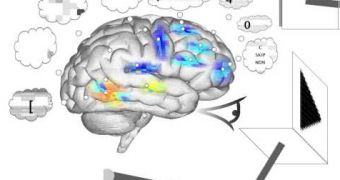After years of study, a group of researchers led by Chris Eliasmith, a neuroscientist at the University of Waterloo, created Spaun, “the world's largest simulation of a functioning brain.”
Chris Eliasmith, the author of a soon-to-be-published book describing the complex construction of the brain, intended the functional brain as a live demonstration of the theory in his book.
“Then I thought the only way people are going to believe me is if I demonstrate it,” he declared, as cited by Canada.
Eliasmith's conception is completely novel, his approach to the matter differing from the one commonly adopted by the scientists working on large models of the brain, such as the European Blue Brain Project.
The Canadian research team based its computer-simulated brain functioning on the example of an aircraft simulating natural flight.
As a consequence of the mimetic creation process, Spaun (which stands for Semantic Pointer Architecture Unified Network) is able to identify numbers, remember and translate lists and even complete some rudimentary IQ tests.
The “smart” mechanism, which needed one year to be built, includes 2.5 million simulated neurons, an eye to allow seeing and an arm to make drawing possible.
Creators say the virtual brain imitates the real neurons' functionality and it can perform a number of eight different tasks, also having the ability to pass from a task to another “just like the human brain.”
Spaun's “natural” cognitive estate is a very rudimentary one. However, it can accumulate information, remember it and then use it as a source for its further behavior. It learns, but only things he can relate to information he already possesses.
“Spaun is not as adaptive as a real brain, as the model is unable to learn completely new tasks,” researchers explain.
“In addition, both attention and eye position of the model is fixed, making Spaun unable to control its own input.”
Chris Eliasmith is currently working on Spauns' improvement, in collaboration with scientists from the United States and Britain, believing that the virtual brain's development would eventually lead to more advanced “machine intelligence,” but also to a better understanding of neurological dysfunctions.

 14 DAY TRIAL //
14 DAY TRIAL //